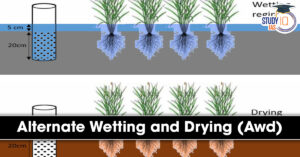Current Affairs 30th March 2023 for UPSC Prelims Exam
Upward Lightning
Context: Brazilian researchers recently succeeded in taking pictures of positive upward discharges of electricity from lightning conductor rods.
About Upward Lightning
- Upward lightning is a phenomenon whereby a self-initiated lightning streak develops from a tall object that travels upward toward an overlaying electrified storm cloud.
- For upward lightning, storm electrification and the resulting presence of a cloud charge region are enabling factors.
- The vertical elevation of a tall object accentuates the electric field locally on the ground, resulting in conditions favourable for the initiation of an upward streak (called a leader) from a tall object.
- It can also develop in response to an electric field change created by a nearby preceding lightning flash.
Process: Stepped ladder trigger
- Upward Lightning process is triggered by the development of the stepped leader (essentially a channel of negative charge that travels downward in a zigzag pattern from a cloud, nearly invisible to the human eye) travelling to the ground in a millisecond, leading to an intensification of the positive charge on the ground.
- As the streaks of the stepped leader keep streaking towards the ground, the electrical charges between the leader tips and the tops of tall objects on the ground keep on increasing.
- In due course, these forces cause the air above these tall buildings or towers to ionise and thereby turn more conductive.
- With the negative charge repeatedly moving toward the ground, the channel of air just above the tall objects turns positively charged, which starts streaking upwards and is called an upward streamer.
- In due course, the negatively-charged, downward-moving stepped leader makes contact with one of the developing positively-charged upwards streamers.

Current Affairs 29th March 2023 for UPSC Prelims Exam
Amchang Wildlife Sanctuary (AMS)
Context: Recently, Assam High Court has sought a report on demarcation of borders of Amchang Wildlife Sanctuary (AMS).
About Amchang Wildlife Sanctuary:
- The Amchang Wildlife sanctuary is located on the eastern fringe of Guwahati.
- It comprises three Reserve forests-Khanapara, Amchang, and South Amchang.
- It stretches from the Brahmaputra River in the north to the hilly forests of Meghalaya in the south, forming a continuous forest belt through Meghalaya’s Maradakdola Reserve Forests.
- It was declared as a wildlife sanctuary in 2004 by Government of Assam.
Flora:
- Khasi Hill Sal Forests, East Himalayan Mixed Deciduous Forest, Eastern Alluvial Secondary Semi-Evergreen Forests and East Himalayan Sal Forests.
Fauna:
- It is home to Mammals (Flying Fox, Assamese Macaque, Slow Loris, Hoolock gibbon etc.), Birds (Lesser and Greater Adjutant, White-backed Vulture, Slender-billed Vulture), Reptiles (Python, Monitor Lizard, Indian Cobra etc.).
- Tree yellow butterflies (gancana harina) are found at the Amchang wildlife sanctuary which is indigenous to Thailand, Malaysia, Singapore and northeast India.
IRDAI
Context: The Insurance Regulatory and Development Authority of India (IRDAI) has lifted limits on the payment of commissions to insurance intermediaries.
New Rule of IRDAI
- Insurance Intermediaries: These include corporate agents, insurance brokers, web aggregators, insurance marketing firms and a common public service centre.
- Commissions are the compensation paid to and received by an insurance agent from an insurer for soliciting and procuring an insurance policy.
- IRDAI has asked insurance companies, including life and non-life, to fix an overall cap on commission to agents, brokers and other intermediaries, giving more flexibility to insurers in managing their expenses.
- Rationale of the regulation is to enable and provide flexibility to the insurers, both life and general insurers, to manage their expenses within the overall limits.
- Benefits of new Rule
- Insurance agents are likely to be more interested in selling insurance products and explaining policy details to consumers beforehand.
- Claim ratio will also improve.
- Move will also help in increasing insurance penetration as agents will get higher commissions.
- New norms will facilitate greater product innovation and development of new product distribution models and lead to more customer-centric operations.
About IRDAI
- The Insurance Regulatory and Development Authority of India (IRDAI) is an autonomous and statutory body, under the jurisdiction of the Ministry of Finance.
- Constitution
- IRDAI is a 10-member body with a chairman, five full-time members and four part-time members.
- It was constituted under an Act of Parliament in 1999 and the agency’s headquarters is in Hyderabad.
- Powers and Functions of IRDAI
- Efficiently conducting insurance business and protecting the interests of the policyholders.
- Approving product terms and conditions offered by various insurers.
- Regulating investment of funds by insurance companies and maintaining a margin of solvency.
- Specifying financial reporting norms of insurance companies.
- Ensuring insurance coverage is provided in the rural areas and also to the vulnerable sections of society.
Institutions of Eminence
Context: The Union Government aims to develop Institutions of Eminence (IoE) as world-class centers of higher education in the country.
What is Institution of Eminence (IoE)?
- Launch: The Government of India launched this Scheme in the year 2017.
- Aim: It aims to enable ten institutions each from the public and private category to have world class academic & research facilities and grant them the status of Institution of Eminence (IoE).
- Eligibility: Institutes that found a place among the top 50 in the National Institute Ranking Framework or those figuring in the top 500 in certain reputed international ratings were eligible to apply.
- Importance: Academic institutions that can impart highest quality education, generate cutting edge research, and attract the best and the brightest from across the globe can have multiplier beneficial effects for the country.
- India has been facing a persistent brain drain due to the belief that Indian institutions cannot match foreign ones.
- If India had home-grown Institutions of Eminence, there would be no need to fly abroad.
- Benefits of IoE:
- Government Institutions to get additional funding up to 1000 Cr.
- The selected Institutions under IoE shall have complete academic and administrative autonomy.
- The Institutions of Eminence will have complete financial autonomy to spend the resources raised and allocated, subject to general conditions.
- Freedom to enter into academic collaborations with other Institutions within the country.
- Flexibility in fixing of curriculum and syllabus, with no UGC mandated curriculum structure.
- UGC Inspection shall not apply to Institutions of Eminence.
- List of Present IoE:


Piezoelectric Effect
Context: For the first time, scientists have reported evidence of the piezoelectric effect in liquids.
About Piezoelectric effect:
- In the piezoelectric effect, a body develops an electric current when it is squeezed.
- The piezoelectric effect was discovered in 1880, in quartz.
- Quartz is the most famous piezoelectric crystal. Quartz is silicon dioxide (SiO2).
- The quartz crystal consists of silicon and oxygen atoms at the four vertices of a three-sided pyramid; each oxygen atom is shared by two pyramids. These pyramids repeat themselves to form the crystal.
- It is used in this capacity in analog wristwatches and clocks. Such crystals are also used in cigarette lighters, electric guitars, TV remote controls, audio transducers, and other instruments where converting mechanical stress to a current is useful.
- When a mechanical stress is applied – i.e., when the crystal is squeezed – the position of the charge is pushed further from the centre, giving rise to a small voltage. This is the source of the effect.
- This effect has only been expected in solids thus far because the body being squeezed needs to have an organised structure, like pyramids of quartz.
- Liquids don’t have such structure. Instead, they take shape of their container.

Right to Strike and ESMA
Context: Government employees are on a long-term strike, demanding a return to Old Pension Scheme (OPS).
What is a Strike?
- The collective refusal by employees to work under the conditions defined by employers is known as strike. It is usually used by workers to secure economic justice.
- Most of the countries across the world provide their employees with the right to strike. But they are subject to conditions, considering the financial implications.
- The right to strike in India
- Constitution: The constitution of India provides right to protest as a fundamental right under Article 19. It does not explicitly recognise right to strike.
- The right to strike flows from the fundamental right to form a union. It is not an absolute right and thus can be restricted on reasonable grounds.
- Under law: Right to strike is a statutory right given under Section 22(1)(a) of the Industrial Disputes Act, 1957.
- The limited right to strike was given for the first time under the trade union Act, 1926 by legalizing certain activities of a registered trade union.
- Constitution: The constitution of India provides right to protest as a fundamental right under Article 19. It does not explicitly recognise right to strike.
- International recognition: The International Labour Organization has recognised right to strike under its convention.
Essential Services Maintenance Act (ESMA)
- The Essential Services Maintenance Act (ESMA) was notified in 1968, to maintain “certain essential services and the normal life of the community.”
- The Act provides a list of “essential services” and it prohibits the employees in these particular services from striking.
- Some essential services under ESMA include post and telegraph, railway, airport and port operations, defence establishments etc.
- Implications: If employees of concerned essential services do not abide by the government directive to end strike, the concerned government can take action against them under ESMA provisions.
- However, the concerned government must warn the agitating employees through the newspaper notification or other mediums, before taking actions under ESMA.


 Defence Acquisition Council (DAC): Role,...
Defence Acquisition Council (DAC): Role,...
 Alternate Wetting and Drying (AWD): A Cl...
Alternate Wetting and Drying (AWD): A Cl...
 Makaravilakku Festival: Significance, Ri...
Makaravilakku Festival: Significance, Ri...

























